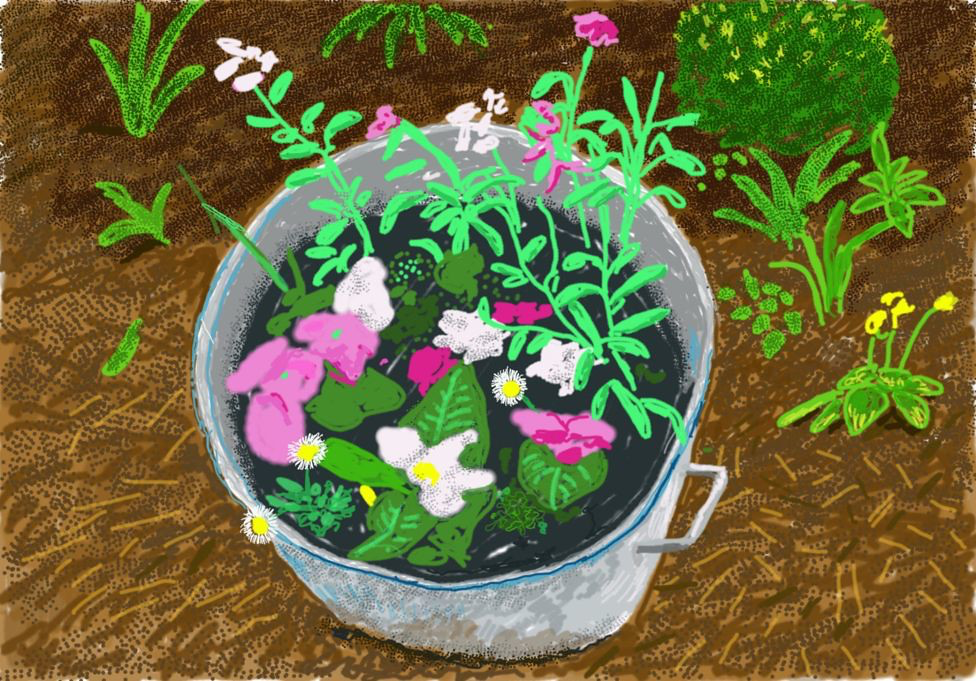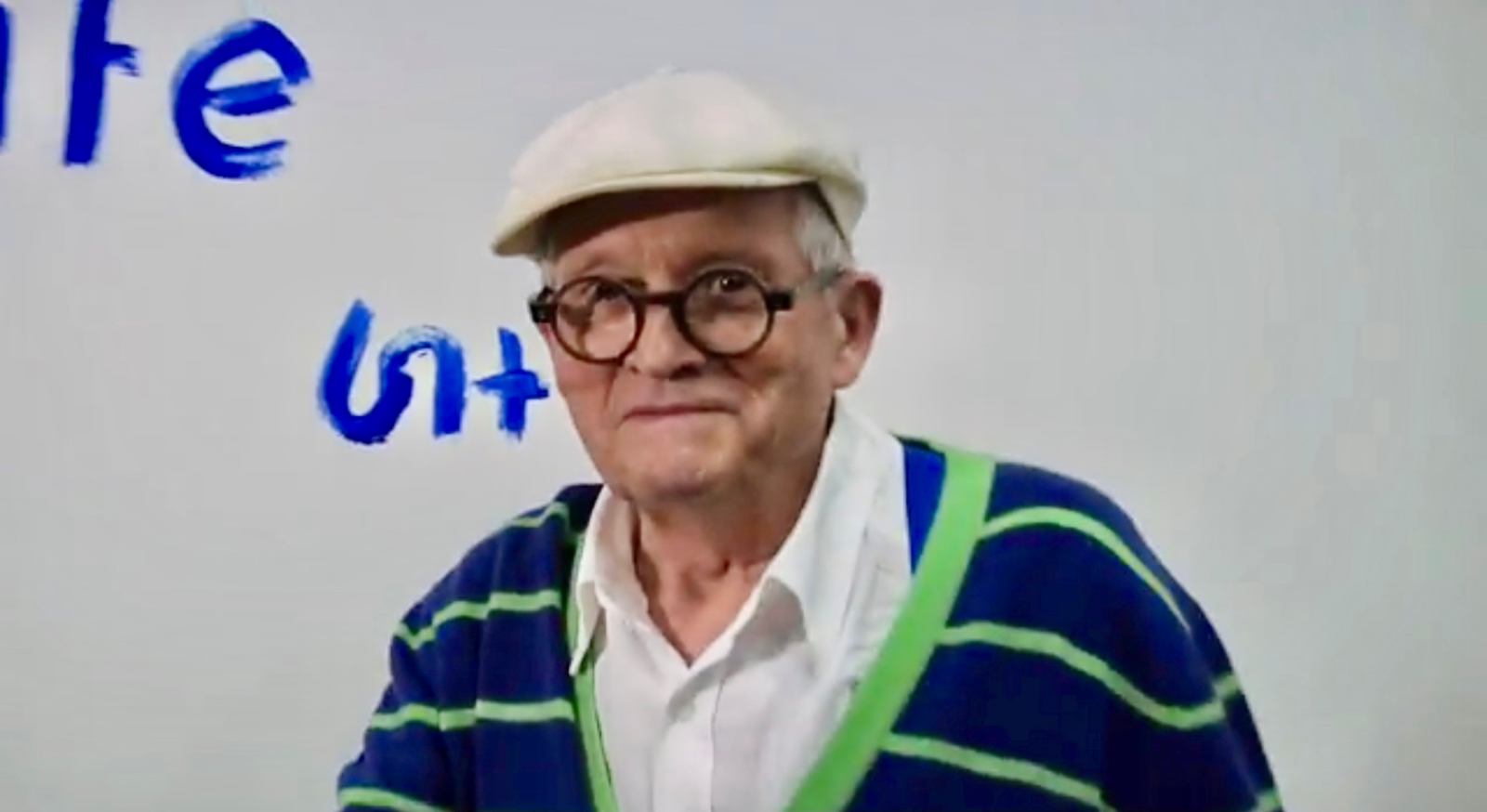Hockney's iPad Impressionism
by Karen Fang
Today, painting with pixels, in the hands of a master. The University of Houston presents this series about the machines that make our civilization run, and the people whose ingenuity created them.
When celebrated painter David Hockney first began drawing on iPads, many weren't sure what to make of it. Starting with an iPhone in 2008, Hockney adopted the iPad as soon as it debuted. For fans of his iconic images of sculpted bodies diving into turquoise pools flooded with California light, the digital medium was an oddly twenty-first century anomaly in Hockney's famously mid-century aesthetic. For others less enamored with the painter's graphic, Pop Art style, Hockney's embrace of modern technology proved what some saw as easy commercial debasement.
And, for Hockney's neighbors in the small Yorkshire village where he had returned for his later years, the artist's new habit sparked bemused gossip that eccentric Hockney was drawing on his phone.

David Hockney, untitled iPad drawing.
Photo Credit: Philip W T Vining and Creative Commons.
At core of this debate over a master painter's use of digital tech is a distinctly twenty-first century anxiety about screen culture. It also belongs to age-old suspicions about art's relationship to machine technology. "Great art picks up where nature ends," French painter Marc Chagall once said, articulating a common belief that artists should aim for organic beauty. For the corollary position against technology, we recall Arts and Crafts influencer Elbert Hubbard, who claimed that while "one machine can do the work of fifty men, no machine can do the work of one extraordinary man."
As a painter, however, David Hockney has always been interested in the confluence of art and technology. In the 1980s, Hockney experimented with early graphics software. By the millennium the artist partnered with a physicist to show how Old Master painters like Rembrandt and Caravaggio might have made their exquisitely rendered images with the help of optical instruments like the camera lucida. Their research, now known as the Hockney-Falco thesis, is one strain of art history devoted to challenging received assumptions about organic vision. It also embraces technology as a productive source of artistic inspiration.

Artist David Hockney in 2017.
Photo Credit: Wikipedia and Creative Commons.
Today, in fact, as Hockney himself ages closer to a century mark, still "painting" daily with fingers on iPad screen, the artist's digital enthusiasms pay homage to his nineteenth-century predecessors. Inspired by Impressionism's serial landscapes of haystacks and water lilies--and Van Gogh's idiosyncratic color palette and virtuoso brushstrokes--Hockney exploits the iPad's ease and portability to refine his work to pure artistic gesture. With a painting app, you never have to mix paints or prepare and clean your brushes. Instead, you focus immediately on the mark itself, the very trace of the hand of the original artist. Color, too, takes only a moment to go from mind's eye to digital canvas.
Paradoxically, by using a twenty-first-century digital technology, David Hockney revives the focus on color and brushwork so distinctive of nineteenth-century painting. In the hands of a master, iPad is not soulless imitation. Instead, that vibrant medium unveils the ghost in the machine.
I'm Karen Fang, at the University of Houston, where we're interested in the way inventive minds work.
"iPad Drawings by David Hockney" Guy Hepner gallery.
David Hockey, "'I love drawing': David Hockney on iPad painting and finding joy in spring." Excerpted from RA Magazine, Spring 2020.
David Hockney, Secret Knowledge: Rediscovering the Lost Techniques of the Old Masters. Thames & Hudson; Viking Studio, 2001.
Cory Perkins, "How David Hockney Became the World's Foremost iPad Painter." WiredNovember 18, 2013.
This episode was first aired on November 16, 2021